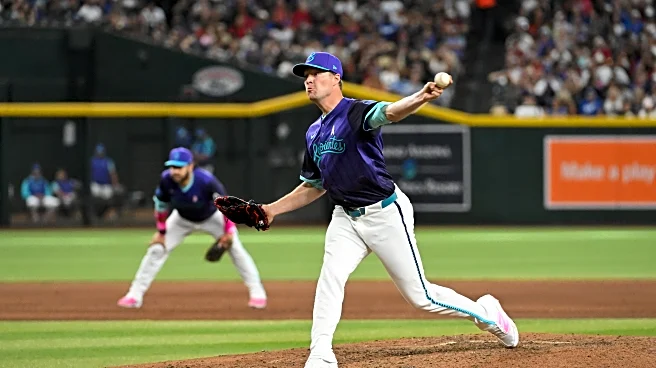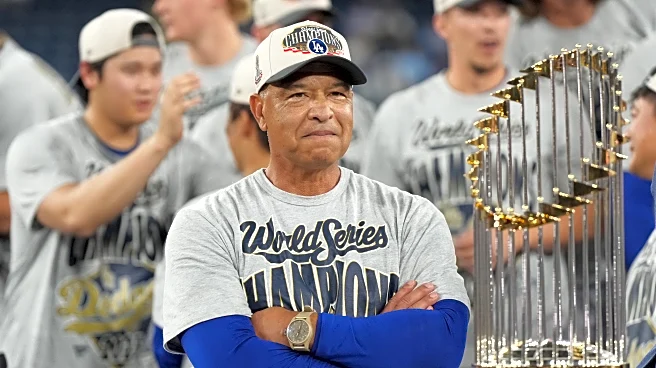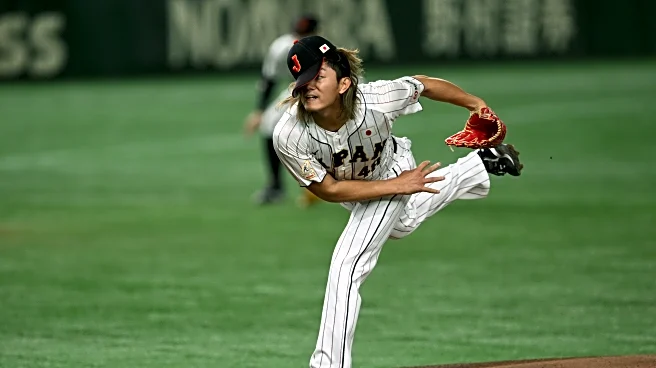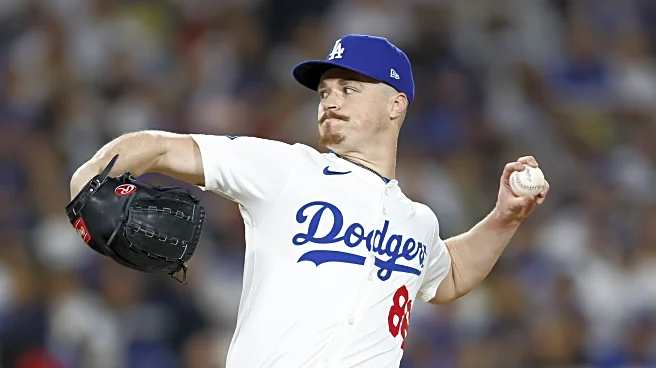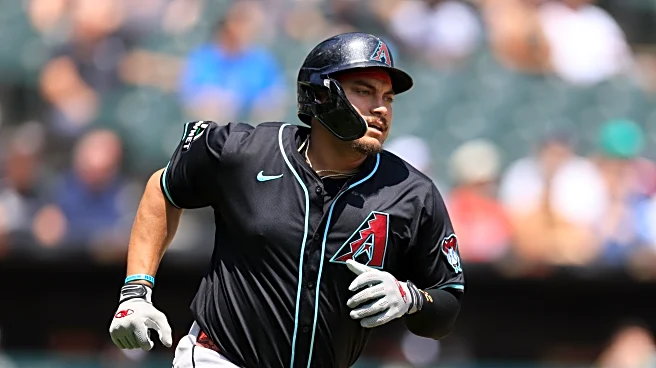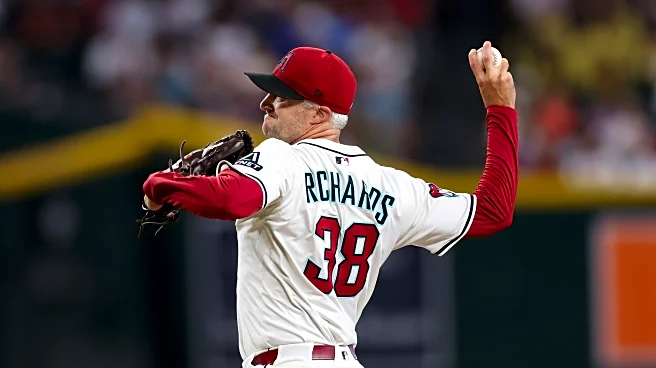It has become an annual ritual around this time. Poke the stinking carcass of another failed Diamondbacks bullpen, and try to figure out what went wrong, and what can be done about it. I’m beginning to wonder
if our relievers are collectively suffering from long COVID. Because they have basically been terrible since the pandemic. It’s now six seasons in a row, that the Arizona bullpen has been ranked in the bottom half of the majors, by every one of four key metrics: ERA, FIP, xFIP and fWAR. This year, they came 27th, 26th, 25th and 28th respectively – a lower ranking for each, by between one and six places, than they managed in 2024.
Want a graph? Because I have got a graph. Here are the relief rankings for each season since Mike Hazen took over as Diamondbacks GM, beginning with the 2017 season.

I’m almost beginning to feel like I’m in a toxic relationship with the D-backs bullpen. Every year, I honestly believe it’s going to be different this time. They’ve changed, I tell myself. They’re much better now. And maybe they are, for a little while. But I inevitably find myself sad, disappointed and wondering if I did something wrong. This year, they were basically perfect through the first nineteen games, with precisely zero blown saves. Seventeen opportunities had resulted in eleven holds and six saves. The twin-headed closing beast of A.J. Puk and Justin Martinez were firing on all cylinders.
However, the seeds of its destruction had already been sown – if you wanted to pinpoint a date, it was April 18. We didn’t know it at the time, but it was the day after A.J. Puk threw his last pitch for Arizona that year. He’d be placed on the IL with elbow inflammation the following day. Between those two points, the team had suffered the first of many crushing, bullpen-related losses. This one came in Chicago: the offense posted a ten-spot in the top of the eighth, turning around a 7-1 deficit. But Joe Mantiply and Bryce Jarvis combined to allow six earned runs in the bottom half, the former being tagged with the first D-backs’ blown save of the year.
There would be twenty-eight more of them, by the end of the year. That tied a franchise high for blown saves in a season, set back in 2013. Particularly damning: there have been seven years with 25 or more – six of them have come in the Mike Hazen era, including the last five seasons in a row: 28, 27, 27, 26 and 29. We’ve seen money spent (Mark Melancon = $12m paid for 18 saves and 10 losses). We’ve seen ex-closers brought in as free agents. We’ve seen dumpster diving. We’ve seen internal development. We’ve seen hard throwers targeted. What we have not seen, however, is a bullpen which is consistently successful, for more than a month or two.
In this case, obviously, injury was a factor. By the end of the year, all three closers – Puk, Justin Martinez, and then spring training non-roster invitee Shelby Miller – had elbows which had gone under the knife. That said, the trio of men who ended the year tied for the team lead in saves otherwise (on… um, three), were: a pitcher signed as a minor-league free agent in July, who got DFA’d in September (Jake Woodford); a guy suspended for gambling (Andrew Saalfrank), and a player with a 7.36 ERA, on the IL with a sprained shoulder (Kevin Ginkel). It seems a bad state to be in, regardless of injuries over the previous months.
But one thing worth noting – the ninth inning wasn’t necessarily the biggest problem here. Saves can be blown earlier – and for the 2025 D-backs, they often were. Of the 29 blown saves, four were by pitchers who entered the game in the sixth inning; seven in the seventh; and a whopping eleven came off Arizona arms who took the mound in the eighth frame. That’s almost twice as many as the six from the ninth (there was one in extras). The best closer in the world can’t do much, if the save has already been blown before they enter the game. Something to bear in mind with regard to construction for next year.
Current candidates
Puk and Martinez should be back at some point during the year. When that is, and what “back” means, very much remains to be seen. For now, they are among the 26 pitchers who currently form more than two-thirds of the 40-man roster (it’s a couple short right now). Crossing off those who will still be injured come next Opening Day, and those who profile more as starting pitchers, I see fourteen names. If the season started tomorrow, who would form the Diamondbacks’ bullpen? Here, in alphabetical order, are the eight pitchers I would pick, out of those currently on the 40-man list:
- Kyle Backhus
- Brandyn Garcia
- Kevin Ginkel
- Drey Jameson
- Bryce Jarvis
- Juan Morillo
- Andrew Saalfrank
- Ryan Thompson
It’s… okay. Not great. Jameson was hitting 99 mph in the Arizona Fall League, and might be the nearest on that lot to a closer. I’d forgotten how good Saalfrank was after coming back from purgatory. Even if he’s nearer his FIP (3.31) than his ERA (1.24), I’d take it. Thompson struggled early on, but after June 1st had a 1.40 ERA, though missed almost two months with a shoulder strain, before coming back solid in September. The others? Well, to varying degrees, they could be swapped in and out. And that’s the problem: no real depth, something absolutely essential. Its insufficiency this year, is how we ended up with Woodford in legitimate save situations.
Internal candidates
We should get some idea of possible prospects who might help in a few days, when Rule 5 eligible players are added to the 40-man roster. However, I’m not sure we will see any bullpen arms protected. Of the pitchers in Arizona’s top 10, Kohl Drake and Mitch Bratt are both currently starting pitchers, while the other is Patrick Forbes. He was our comp pick just last June for the loss of Christian Walker, and has yet to start his pro career. Beyond the top ten, the situation is similar. There are other starters, in Cristian Mena and Yu-Min Lin, and players unlikely to be help next year, because they haven’t pitched above High-A.
There is always the possibility of a starter being converted to a bullpen role. Indeed, we saw that with Mena over his three appearances, all in relief, this year at the major-league level. He looked good, allowing one run on three hits, over 6.2 innings with eight strikeouts. But as with all pitching prospects, they’ll be given the chance to see if they can make it in the rotation first. Only usually if they can’t – typically due to their pitching arsenal not being good enough to retire the same hitters three or four times – do they get moved to the bullpen. Sometimes they dominate. Sometimes they’re better off in the rotation, as we saw this year with Ryne Nelson.
New candidates
If there won’t be much help coming from inside the house, what about externally? I have certainly seen a lot of calls for Hazen to open his pocket-book and sign a well-paid closer. That’s something he has previous been reluctant to do, with Melancon a) the rare exception, and b) likely proving why Hazen has been reluctant. Not even at the higher levels is success guaranteed. Just ask the Dodgers. They paid Tanner Scott and Kirby Yates $16 million and $13 million respectively, and got 98.1 innings at a 4.94 ERA in return. Other teams also saw high-priced relievers fail, from Devin Williams in the Bronx, to Jose Leclerc with Oakland Las Vegas wherever.
So I don’t blame Hazen for being reluctant to commit. If we’re going to spend, say, $15 million on the bullpen, I’d rather we spread the risk and get three decent arms at $5m each, rather than rolling the dice on someone like Robert Suarez or Raisel Iglesias. As noted above, you need depth. But also because, there really is no such thing as a “proven closer”. Okay, there are the Mariano Riveras and Trevor Hoffmans. Good luck finding one of those. Of the seventeen pitchers who notched 25 or more saves in 2023, only seven managed it the following season. Those seven then became less than a handful to do it again this year. Closing ain’t easy.
Indeed, the same goes for relieving generally. The problem with free agency is, price tends to be determined by the most recent performance – and if a reliever did well, regression is likely to bite. If you look at the Fangraphs Free Agent Tracker for relievers, the top twenty averaged 1.24 fWAR this year. But the average projection for the same men next year is 59 percent lower, at 0.51 fWAR. While the concept of regression applies to hitters too, they are much less volatile – the equivalent figures there are 3.00 and 2.17, only a 28 percent drop. [Starting pitchers actually went up slightly, due to the expectation of full 2026 seasons from Shota Imanaga and Michael King]
It this that leads to the much maligned “dumpster diving”, because regression works both ways. The theory goes, any good reliever can have a bad year, driving down their market price, and making them a “buy low” candidate. The hope is that they’ll then rebound to career norms, and deliver value over cost. It can work. Ryan Thompson was simply let go by the Rays, so you can’t argue with the price. He has posted a 134 ERA+ over 128 games since being picked up by the D-backs. But there is no guarantee of success either. Hazen’s consistently dismal record does suggest building a bullpen is not luck, however.
Conclusions
Very good teams don’t particularly need to care about the bullpen – see the Dodgers this year. On very bad teams, it doesn’t matter. But the D-backs have been in neither camp of late. The bottom line is this: during the entire Hazen era, the D-backs bullpen has put up less fWAR than any other team in baseball. The average difference between Arizona and simply a league-median bullpen over that time has been about 2.6 wins per season. That certainly was more than the margin by which the Diamondbacks missed the post-season in 2024, and would have made things very interesting last year.
Fringe contenders need to try and squeeze out every possible win they can. This includes, not only things like bullpen effectiveness, but also good defense and base-running. It’s on the fringes that you can perhaps hope to pick up an extra win each month, and over the course of the season those add up. Too often last year, those wins became defeats – the Cubs game mentioned earlier being an example. I’m sure you can think of many more. Stemming that bleeding is going to be important, and Hazen has made no secret of the fact that the bullpen will be one of the winter’s top priorities. Knowing the question, however, is one thing. Answering it, is another.


